Epically awesome pictures of Saturn
The sun is located directly behind Saturn in this image taken from 1.3 million miles away. The light from the sun passes through Saturn's rings, revealing the never-before-seen E ring, which is the faint, outer-most ring below.

Shown here is a beautifully detailed look at Saturn's four inner rings. The closest to the planet is the D ring, and extending outward from there are the C, B, and A rings. Each ring is separated by a thin, empty gap.
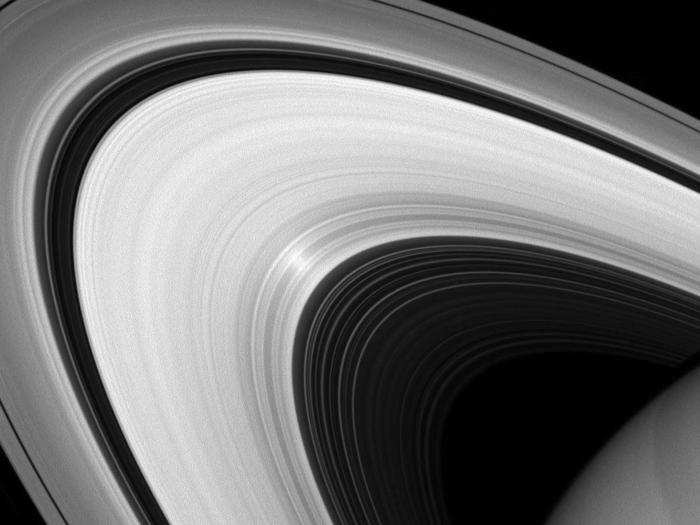
This image highlights Saturn's North Pole, which displays a six-sided hurricane that's 60 miles deep and a whopping 1,250 miles across.
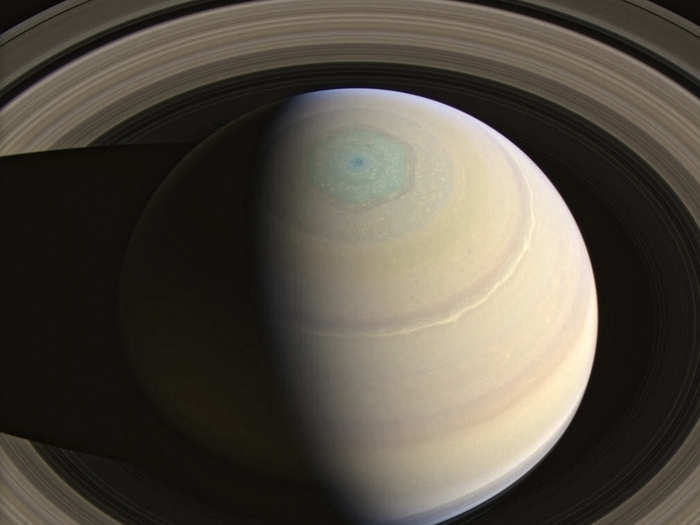
The bizarre shape of this giant storm, shown below in false-color, might come from columns of clumped gas spinning at different speeds. Scientists have made similar spinning hexagons this way using water in labs on Earth.
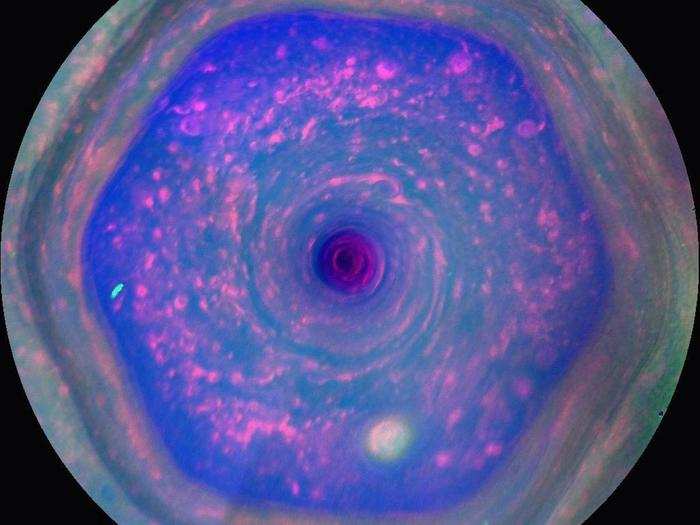
Cassini clocked the storm's wind speeds at a racing 330 mph. Below is a false-color image showing the center of the vortex — red clouds in the image are lower in altitude than the surrounding green ones.
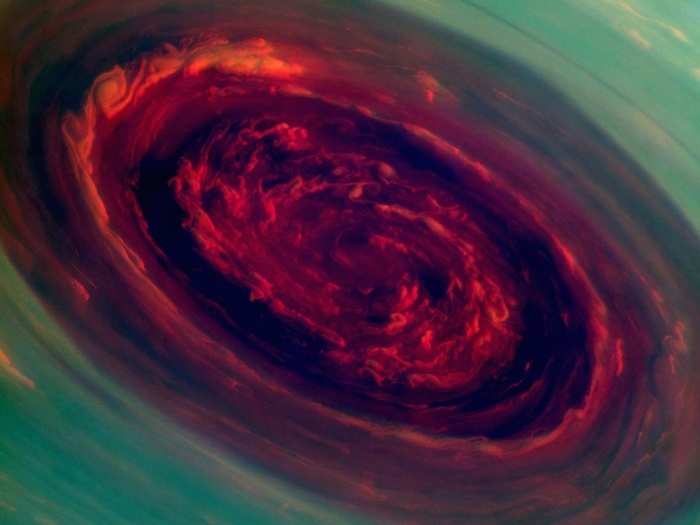
Electrical storms, called aurorae borealis, also show up on Saturn's North Pole. Here's one in blue outlining the hexagon of the hurricane.
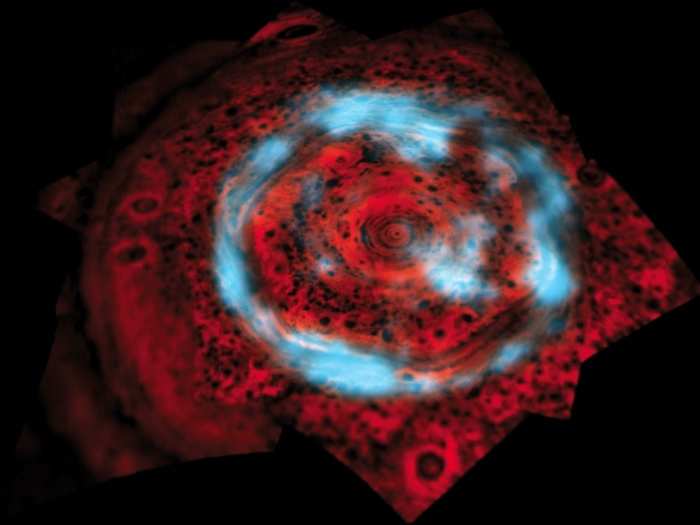
In 2010, an unexpected storm arrived in Saturn's Northern Hemisphere. Within only a few months, the storm had grown into a colossal band of swirling gas — shown below as neon-orange swirls in false color — that wrapped around the entire planet.

The storm's true color is a creamy-white, which explains why scientists call it Saturn's "great white spot." They think these storms form every summer in the Northern Hemisphere (once every 30 Earth-years), but this one came a decade sooner than expected for reasons unknown.

Here's an amazing close-up of the front edge of the storm, which lasted a total of 267 days and conjured a vortex that grew to be 7,500 miles across.
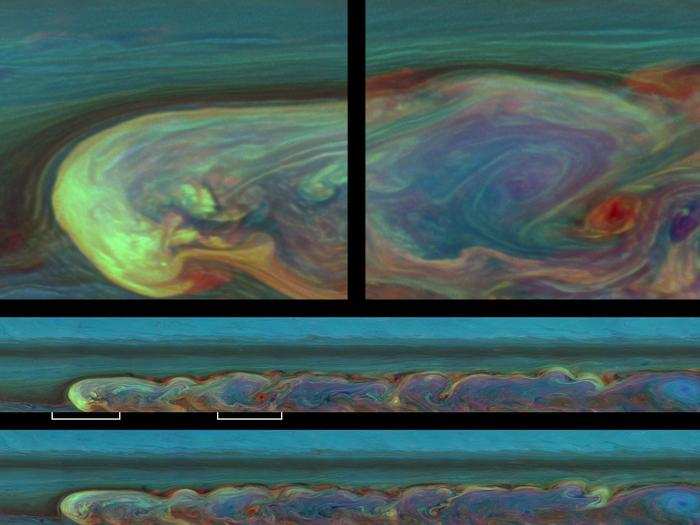
These curlicues etched along the Southern Hemisphere are actually giant vortices in one of Saturn's most active regions called "Storm Alley," where storms have brewed nonstop since Cassini first spotted them in 2004.
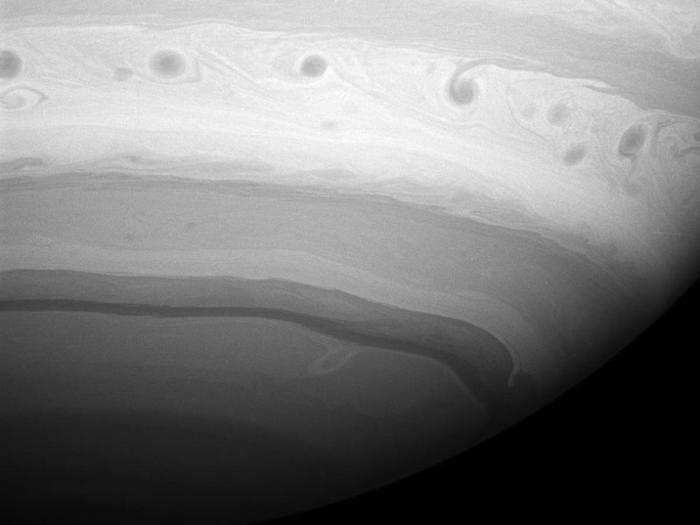
The Dragon Storm, shown in this false-color image as the neon-orange feature just above and to the right of center, is a thunderstorm in Storm Alley that occasionally has intense flares, which emit powerful radio waves.

This rainbow on Saturn's rings is actually an artifact that appeared after scientists processed the image and is not real. Regardless, it still makes for a beautiful photo.
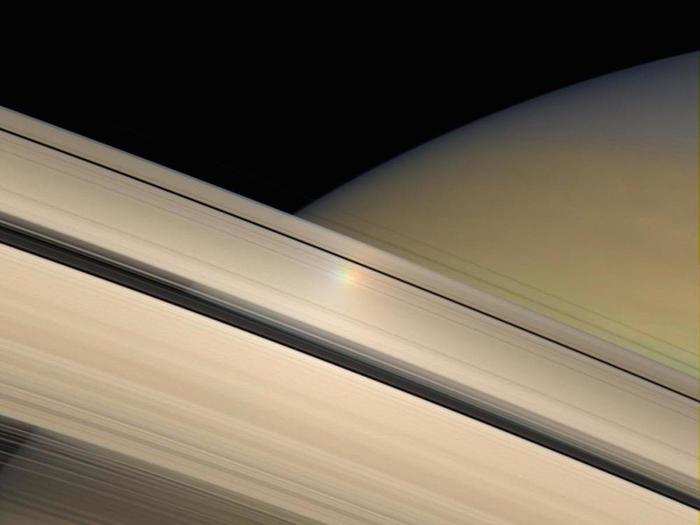
Scientists think most of Saturn's rings are the leftover guts of moons that the planet's powerful gravity has ripped to pieces. Unlike those, the E ring, shown here, is made from plumes emitted by Saturn's moon, Enceladus, shown below as the black sphere inside the ring.
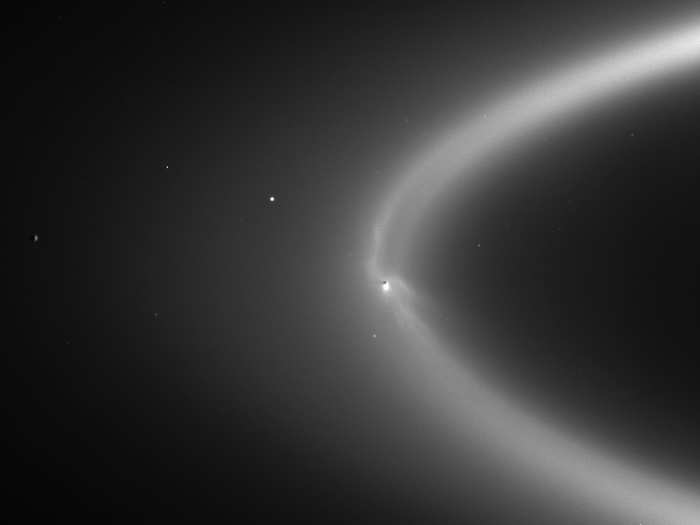
Below is a distant look at Enceladus, which is the tiny speck right of center just above the thin line marking Saturn's rings. The rings cast shadows across the Northern Hemisphere, which show up here as dark banded stripes.
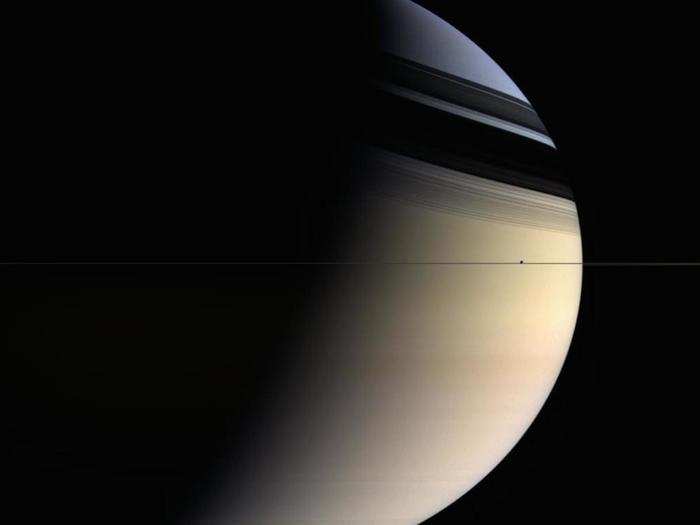
Just below center you can see one of Saturn's four shepherd moons, called Daphnis. Shepherd moons are tiny bodies that orbit close to Saturn and therefore frequently traverse its rings.
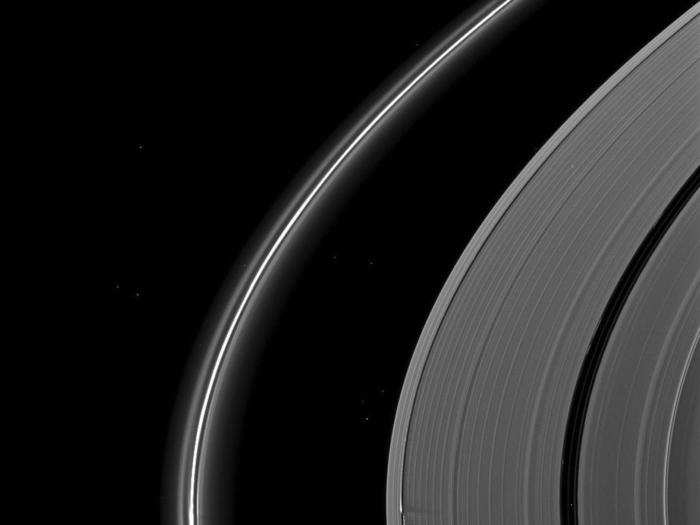
Cassini spots shepherd moons by the disturbances they leave as they move through the rings. Here's a closer look at Daphnis (5 miles across) making waves through Saturn's A ring.
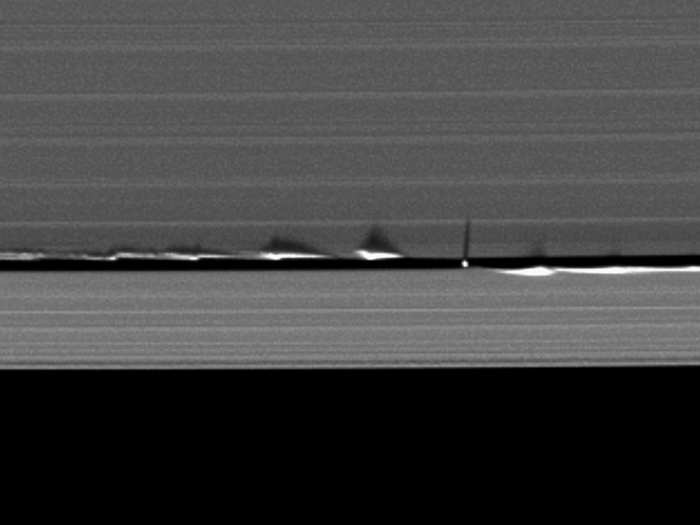
This natural-color image, taken from 621,000 miles away, reveals a mysterious change in Saturn's color from northern blue to southern gold. Scientists aren't sure why this happens.
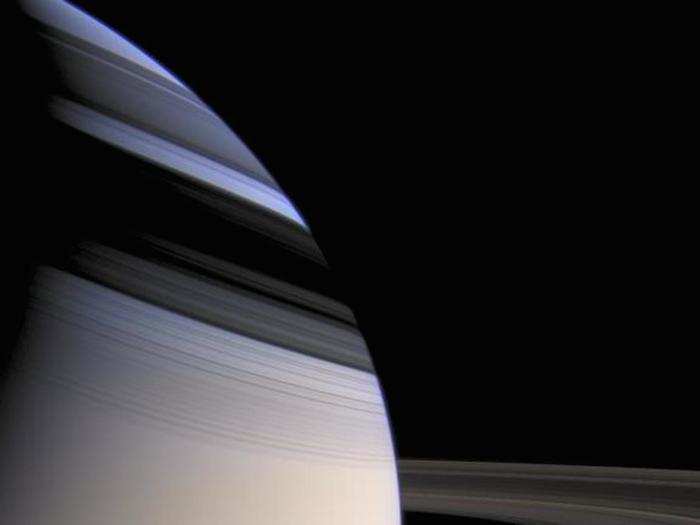
Shown here is the closest of Saturn's four inner moons, Mimas, against a backdrop of the planet's distinct bluish-hue in the Northern Hemisphere.
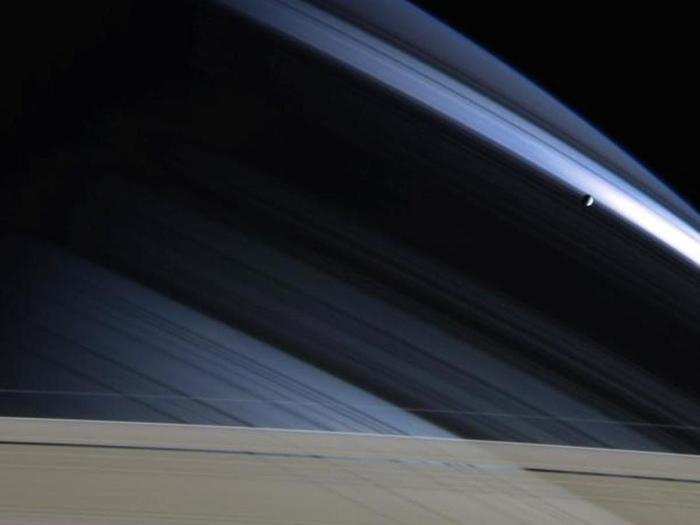
Saturn's South Pole has a giant hurricane-like storm that is one-third the size of the hexagonal storm in North Pole — making it roughly 5,000 miles across. These two images highlight the different layers and densities in the storm with the false-color image at the top.
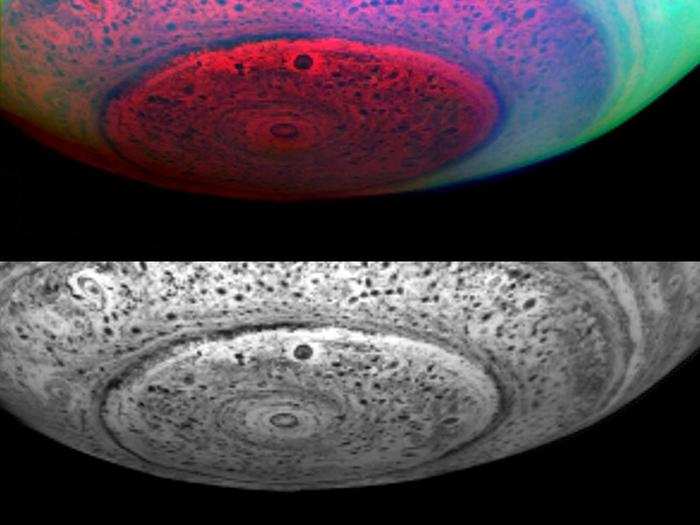
This close-up shows the eye of Saturn's southern storm, which is up to 40 miles deep and has wind speeds as fast as 350 mph.
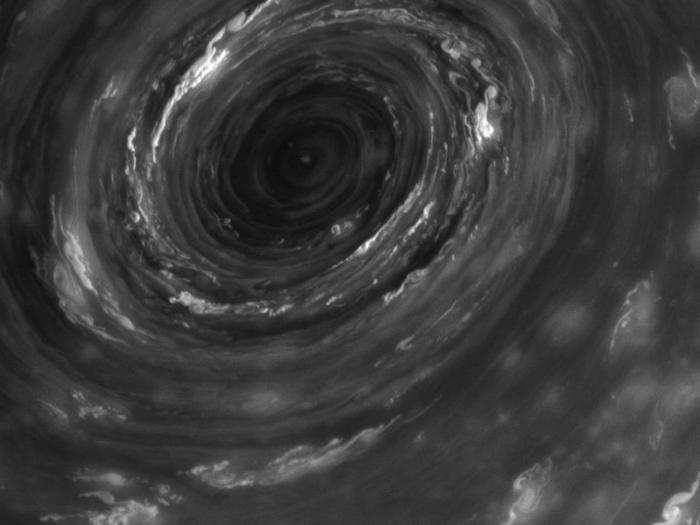
Finally, here's some perspective: Look in the lower-right corner and you'll see a small arrow pointing to a tiny, pale-blue dot. That's Earth. You could fit 764 Earths inside Saturn.
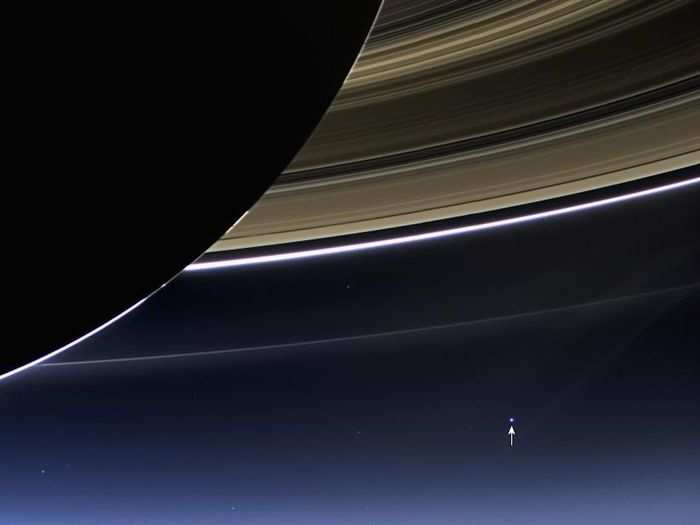
Popular Right Now
Popular Keywords
- India’s wearables market decline
- Vivo V40 Pro vs OnePlus 12R
- Nothing Phone (2a) Plus vs OnePlus Nord 4
- Upcoming smartphones launching in August
- Nothing Phone (2a) review
- Current Location in Google
- Hide Whatsapp Messages
- Phone is hacked or not
- Whatsapp Deleted Messages
- Download photos from Whatsapp
- Instagram Messages
- How to lock facebook profile
- Android 14
- Unfollowed on Instagram
Advertisement
